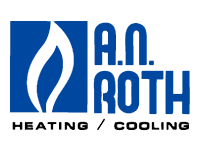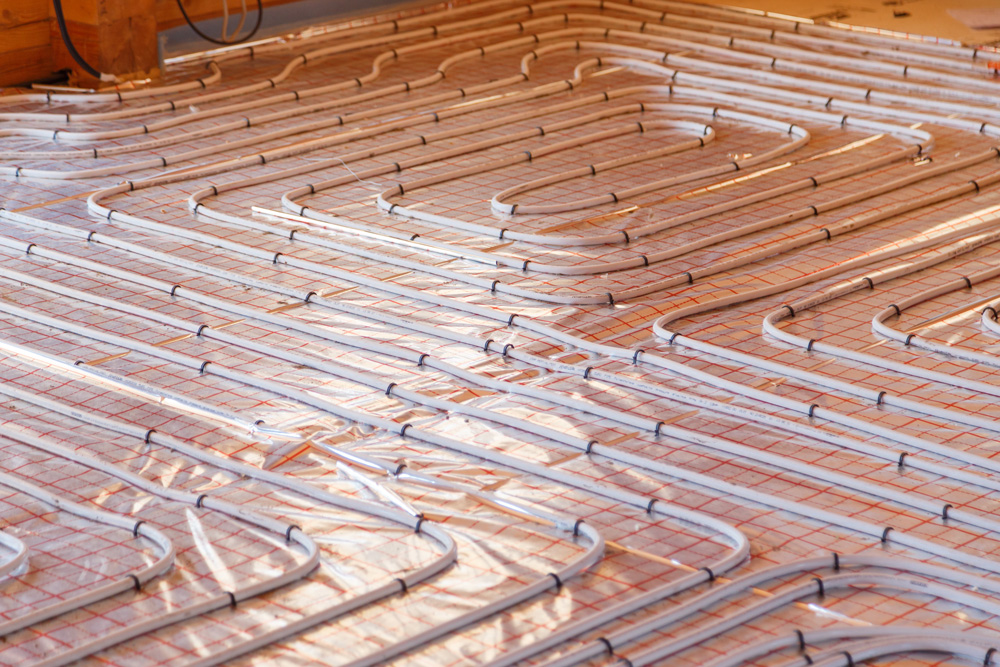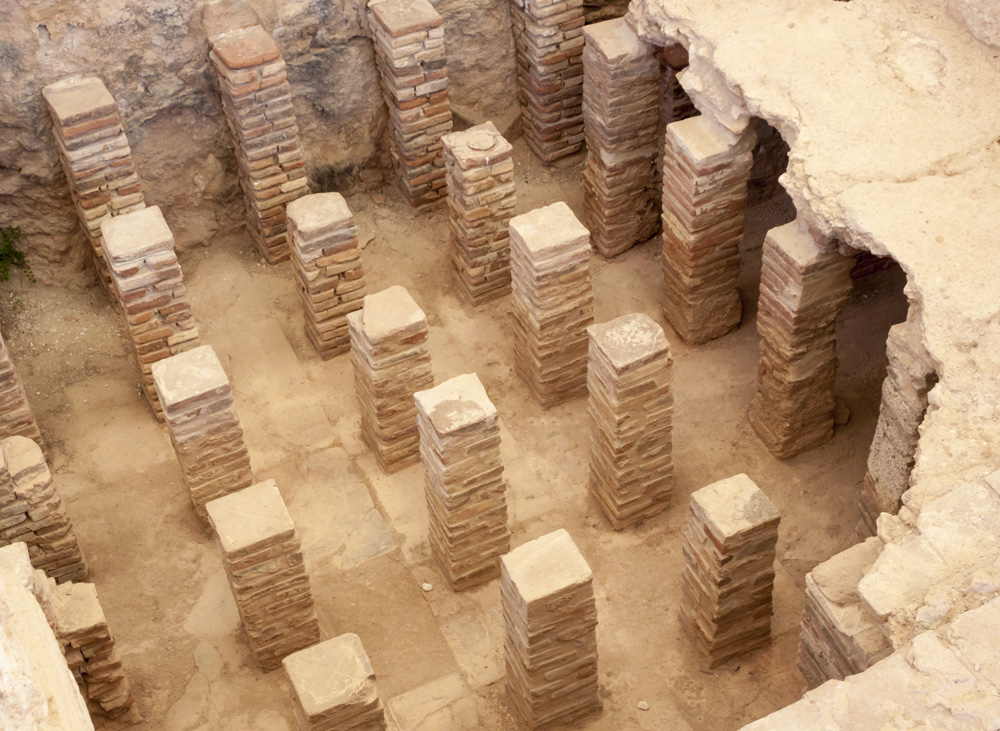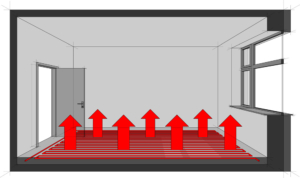 For many of us, winter means stepping onto icy floors with bare feet, walking through drafts, and cozying up near the vent to stay warm. This is because the majority of Americans heat their homes with forced central air, meaning that warm air is pumped throughout the house through ducts and vents.
For many of us, winter means stepping onto icy floors with bare feet, walking through drafts, and cozying up near the vent to stay warm. This is because the majority of Americans heat their homes with forced central air, meaning that warm air is pumped throughout the house through ducts and vents.
Radiant heat is a more comfortable way to heat your home. Most radiant heat systems are underfloor systems meaning either hot-water tubes or electric wires are installed below the floor. This heating method eliminates uncomfortably cold floors, cold patches, and uneven temperatures.

Radiant underfloor heating involves laying electric wires or hot water tubing throughout the room.
Not sure what “radiant heat” is? Simply, radiant heat warms objects directly. Objects absorb thermal energy and then radiate heat to other objects. Radiant heat has been a popular method of temperature control for ages, from Roman hypocausts to radiators. With underfloor systems, thermal radiation rises from below, warming the floor, which in turn warms the rest of the room.

Roman hypocausts were used to heat baths and other public buildings by circulating hot air under a masonry floor.
There are a lot of benefits to this kind of heating system. It is much more efficient than forced-air because it eliminates the loss of conditioned air from ducts. Underfloor radiant heating systems also use less electricity than other systems and can save up to 15% on energy bills.

Radiant underfloor heat eliminates cold spots and uneven temperatures!
Underfloor radiant heating is also more comfortable than other forms of heating. As thermal energy emanates from the entire floor, icy floors, cold patches, and overheating are virtually eliminated. Overall, radiant heating systems warm evenly, so it’s easy to maintain a comfortable temperature. Radiant heating also means better air quality. Unlike forced air systems, radiant heat does not recirculate dust and allergens.
Radiant heat is most easily installed in new construction projects, but it’s possible to install radiant heat in remodeling projects! If you want to learn more about radiant heating systems, contact us today!


 For many of us, winter means stepping onto icy floors with bare feet, walking through drafts, and cozying up near the vent to stay warm. This is because the majority of Americans heat their homes with forced central air, meaning that warm air is pumped throughout the house through ducts and vents.
For many of us, winter means stepping onto icy floors with bare feet, walking through drafts, and cozying up near the vent to stay warm. This is because the majority of Americans heat their homes with forced central air, meaning that warm air is pumped throughout the house through ducts and vents.

